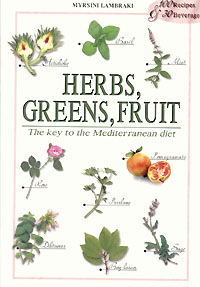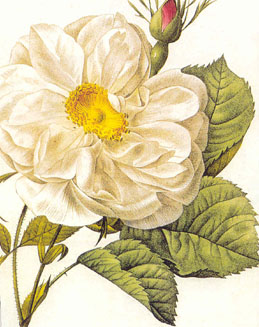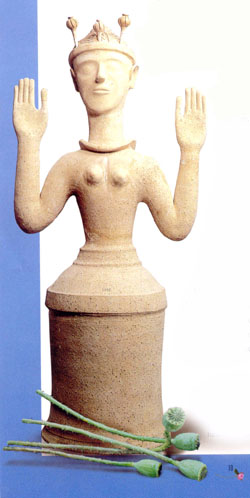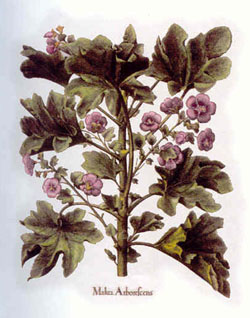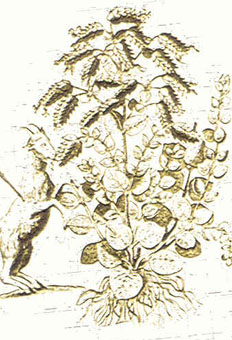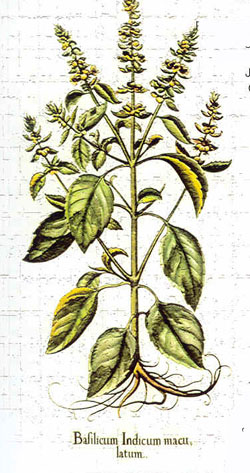
|
|
According to the Oxford dictionary herbs are all the useful plants whose leaves, roots, stems and flowers are valued as food or medicines by dint of their aroma or other characteristic. This definition applies to a wide variety of plants that are used in food, drinks, medicines, cosmetics, etc. However, in the last few centuries the term “herb” has been reserved strictly for a limited range of plants attributed with medicinal qualities and used for infusions, popular treatments, or as raw material in modern pharmacology. HERBS AND THEIR MEDICINAL VALUE The distinction of plants into herbs, vegetables, greens, and fruits is only a few centuries old. In antiquity, even up to the Middle Ages, the Greeks, Romans, Arabs, Chinese and the Hindus, attributed to plants therapeutic qualities and included them in their daily diet. Plants were consumed raw or cooked and combined with fish and meat dishes. In any case, it has been proved that the above plant categories maintain their active ingredients and therapeutic qualities even when cooked. The Cretan nutritional model includes a wide range of plants (wild greens, vegetables, fruit and seeds) known as “herbs of the kitch
Centuries later, John Evelyn (1699) wrote, “It (the borage) is known to enliven the spirit of hypochondriacs and relieve the mind of people steeped in study…”. Borage was used in salads, as is the case today. Charlemagne, king of the Franks (742-814 AD) commissioned the compilation of a list of the most valued aromatic herbs and named the list “friend of the physician and the pride of the cook”. He then ordered that the herbs on that list be grown in his lush gardens. THE MYTH OF GODDESS FLORA The bonds between our ancestors and nature (mainly plants) is not only testified by volumes of specialist works and literary extracts but also by myths, as is the case with the myth of the goddess of vegetation, Flora. In his book “The Flora of Greece”, chapter “Myth and Cult”, E. Bauman provides a wonderful description of the connection between nature, gods and people: “Goddess Flora was assisted in her tasks by the Horae (or Hours) the daughters of goddess Themis and Zeus and attendants to the Sun. The Horae were the three goddesses of sea
Modern epidemiologists, physicians, and nutrition experts believe that herbs, wild greens and fresh fruits native to the Mediterranean are “loaded” with solar energy. The sun over the Mediterranean seems to exert a most beneficial influence on all edible plants with subsequent effects on human health. Myths and legends concerning plants and their development are no accident but result from the Greeks’ deep knowledge of their natural resources. The Greeks were mostly vegetarians with their daily diet consisting mainly of cereals, legumes, vegetables, wild greens, roots, fruit and fish. For the Greeks the term vegetables was reserved for all greens while the term herbs was reserved for spices. This distinction is currently employed today in various parts of Macedonia and Epeirous. Our ancestors, as well as the ancient Romans, were able to distinguish over 1000 plant species and, therefore, had compiled scores of detailed descriptions concerning their particular qualities, as well as their kitchen and medicinal applications. Among the most prolific experts in botanical matters were Dioscurides. Theophrastus, Hippocrates, Antiphanes, Galinus (Galen), and Pliny. Thephrastus, who had set up a pilot farm in Athens, provides handy instructions for cultivating and growing fruit-bearing trees, e.g. fig trees, olive trees, almond trees and pot plants! Even Homer, whose monumental work does not make detailed gastronomic references, makes specific references to 36 plant and tree species in his Iliad and 44 in his Odyssey. Among those plants cited are the crocus,
Equally significant are the gastronomic accounts bequeathed to us by Athenaeus (170-230 AD) in “Deipnosophists”. In his work Athenaeus talks about the emollient qualities of the mallow, the sub-acid taste of the sorrel, the vegetable texture of the nettle, the aphrodisiac qualities of bulbs, while there are also references to asparagus, fennel, caper, oregano, sage, laurel, rosemary, fig tree, grapes and pomegranates. Households in ancient Athens maintained supplies of salt, oregano, vinegar, thyme, sesame, raisins, caper, eggs, salted fish, cress, figs, olives, olive oil, etc. An extract from comic poet “Alexi” says, “Place ground oregano at the bottom of the dish and use molasses for colour”. During the Byzantine period herbs and vegetables were associated with lower the classes social, hence they were rarely served at the dinner tables of the upper class, kings and gourmets. On the other hand, this lowly and inexpensive diet was much appreciated by the common folk, poor and clergy. Harvesting/collection and supplying of herbs and vegetables were highly systematized by the clergy who observed strict fasting rules for almost 180 days during a year. Through centuries of trial and error activities primitive man became aware of the medicinal qualities of plants and herbs. He identified herbs that could sooth a range of pains and cure diseases or prevent others. A lot of herbs/plants used for their medicinal qualities today, for example the sage, cedar tree, and the leaves of the olive tree, were known to the Egyptians and found inscribed in papyrus scrolls.
In his work, “On the History of Plants”, Theophrastus, the Greek philosopher and scientist (372-287 BC) set the foundations for modern botany. He provides invaluable information concerning the pharmaceutical and aromatic qualities of a wide range of plants. Centuries later botany found its main exponent in the person of Dioscurides (c.512 AD). His knowledge of plants/herbs are astonishing, even to modern standards. In his book “De material medica”, Dioscurides identified more than 500 plant species. Of note is the fact that 40 of these are currently used in pharmacology. The bulk of our knowledge of plants and herbs in ancient Greece comes from the works of Theophrastus and Dioscurides. At a later time Greek compilations of herbs and plants were systematized by Claudius Galinus (Galen, 131-109 AD), Greek physician and medical writer from Pergamum, Asia Minor. He recorded 304 medicines that were produced from herbs, wild greens, trees and fruits.
Vegetable oils scented with herbs and spices were extensively used in antiquity, but we have no knowledge of their application in the kitchen. We do know, however, that owing to their inherent qualities, vegetable oils were used for body care. Selected herbs were added to vegetable oils to lend them valuable curative, styptic and antioxidant qualities. During the reign of Byzantine emperor Constantine “the purple-born”, legist Cassianos Vassos is credited with a number of recipes for scented olive oil. Some of these recipes provide instructions for improving medium and low quality olive oils with the addition of aromatic herbs. For example, rancid olive oil improves with the addition of dill and foul-smelling olive oil with the addition of coriander or raisins. A popular practice in the villages of the province of Pediada, Crete, was to add 2-3 oregano sprigs in large earthenware jars used as olive oil containers. There has been a lot of research in the plant kingdom for substances with antioxidant qualities, particularly in herbs and aromatic plants, the main sources of antioxidants. Independent investigation results concur on the significant antioxidant qualities of rosemary and oregano. In 1952 Chipault noted that consumption of salted meat should be combined with infusions of rosemary, sage, and thyme. In addition, he claims that oregano combined with mayonnaise acquires excellent antioxidant properties. Modern research is under way by the Aristotelian University of Athens with regard to the stability of olive oils mixed with rosemary, oregano, garlic and thyme. TIPS FOR HARVESTING HERBS & WILD PLANTS The proper harvesting of wild herbs is determined by the particular location of the plants as well as their subsequent culinary application. In particular, - Leaves, shoots and blossomed tops should be harvested during the afternoon hours when most of the plants’ active substances accumulate in those sections. Similarly, roots and bulbs should be collected in autumn or spring, and fruits, flowers early in the morning all year round. - Never harvest plants/herbs, if you are not sure whether they are edible. - Herbs and wild greens growing on roadsides or curbs are not suitable for consumption. TIPS FOR PURCHASING HERBS & WILD PLANTS |
|
